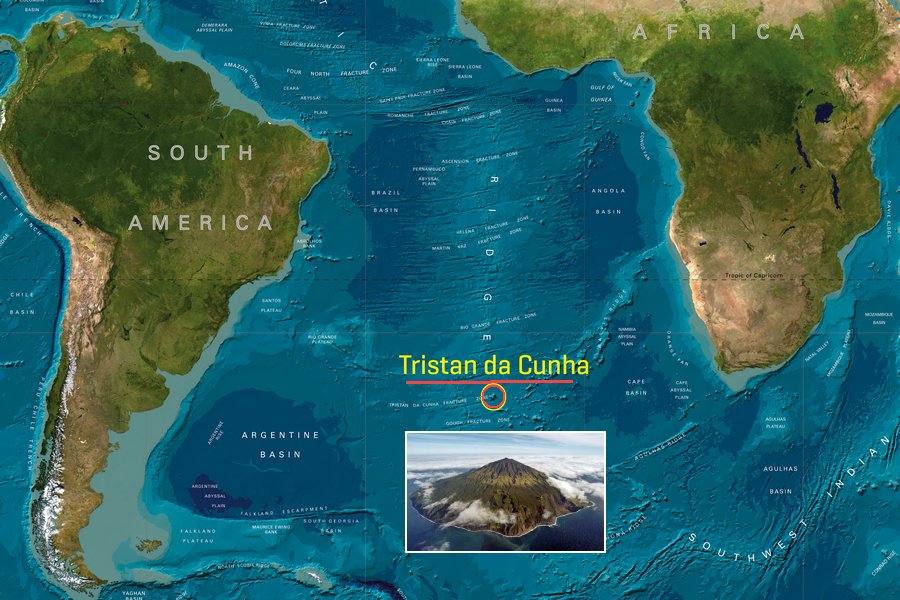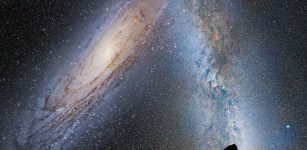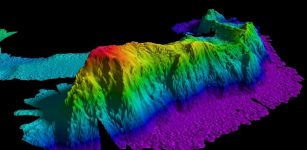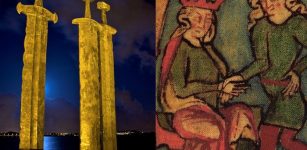Tristan da Cunha: The Remotest Inhabited Island
MessageToEagle.com – Tristan da Cunha is a 38-square-mile volcanic outpost and the remotest inhabited island in the world, according to the Guinness Book of Records.
It’s situated 1,510 miles southwest of its nearest neighbor, St. Helena, and 1,950 miles west of Africa. Discovered by the Portuguese admiral of the same name in 1506, and settled in 1810, the isle belongs to Great Britain and has a few hundred residents.

Coming in a close second – and often wrongly cited as the most distant land – is Easter Island, located 1,260 miles east of its nearest neighbor, Pitcairn Island, and 2,300 miles west of South America.
See also: Amasia – New Future Supercontinent
The mountainous 64-square-mile island was settled around the 5th century, supposedly by people who were lost at sea. They had no contact with the outside world for more than a millennium, giving them plenty of time to construct more than 1,000 enormous stone figures, called moai, for which the island is most famous.
On Easter Sunday, 1722, however, Dutch settlers moved in and gave the island its name. Today, 2,000 people inhabit the Chilean territory. They share one paved road, a small airport, and a few hours of television per day.
MessageToEagle.com
Expand for referencesReferences:
Related Posts
-
 The Kuiper Cliff Mystery – Why Does The Kuiper Belt Suddenly End?
No Comments | Jun 12, 2017
The Kuiper Cliff Mystery – Why Does The Kuiper Belt Suddenly End?
No Comments | Jun 12, 2017 -
 Catequil – Inca God Of Thunder And Lightning Who Predicted The Future And Was Cultural Hero Of Inca People
No Comments | Dec 18, 2023
Catequil – Inca God Of Thunder And Lightning Who Predicted The Future And Was Cultural Hero Of Inca People
No Comments | Dec 18, 2023 -
 Emilia Plater: National Female Hero Of Polish And Lithuanian People
No Comments | Apr 21, 2017
Emilia Plater: National Female Hero Of Polish And Lithuanian People
No Comments | Apr 21, 2017 -
 Collision Between The Milky Way And Andromeda Galaxy
No Comments | Feb 15, 2016
Collision Between The Milky Way And Andromeda Galaxy
No Comments | Feb 15, 2016 -
 Sleep Paralysis: Being Awake And Unable To Move
No Comments | Feb 17, 2016
Sleep Paralysis: Being Awake And Unable To Move
No Comments | Feb 17, 2016 -
 Acacia Tree Uses Ants As Body Guards And Rewards Them With Shelter And Food
No Comments | Nov 3, 2016
Acacia Tree Uses Ants As Body Guards And Rewards Them With Shelter And Food
No Comments | Nov 3, 2016 -
 Seamounts: Gigantic Elevations More Than 1,000 Meters High At The Bottom Of Ocean
No Comments | Mar 26, 2017
Seamounts: Gigantic Elevations More Than 1,000 Meters High At The Bottom Of Ocean
No Comments | Mar 26, 2017 -
 The End Of Our Universe: Can We Escape To A Parallel Universe And Avoid The “Big Freeze”?
No Comments | Dec 10, 2015
The End Of Our Universe: Can We Escape To A Parallel Universe And Avoid The “Big Freeze”?
No Comments | Dec 10, 2015 -
 Sverd I Fjell – Swords In Rock: Battle Of Hafrsfjord Won By Harald Fairhair – First King Of Norway
No Comments | Mar 9, 2016
Sverd I Fjell – Swords In Rock: Battle Of Hafrsfjord Won By Harald Fairhair – First King Of Norway
No Comments | Mar 9, 2016 -
 Mysterious Disappearance Of Scythians Remains Unsolved
No Comments | Sep 16, 2015
Mysterious Disappearance Of Scythians Remains Unsolved
No Comments | Sep 16, 2015
